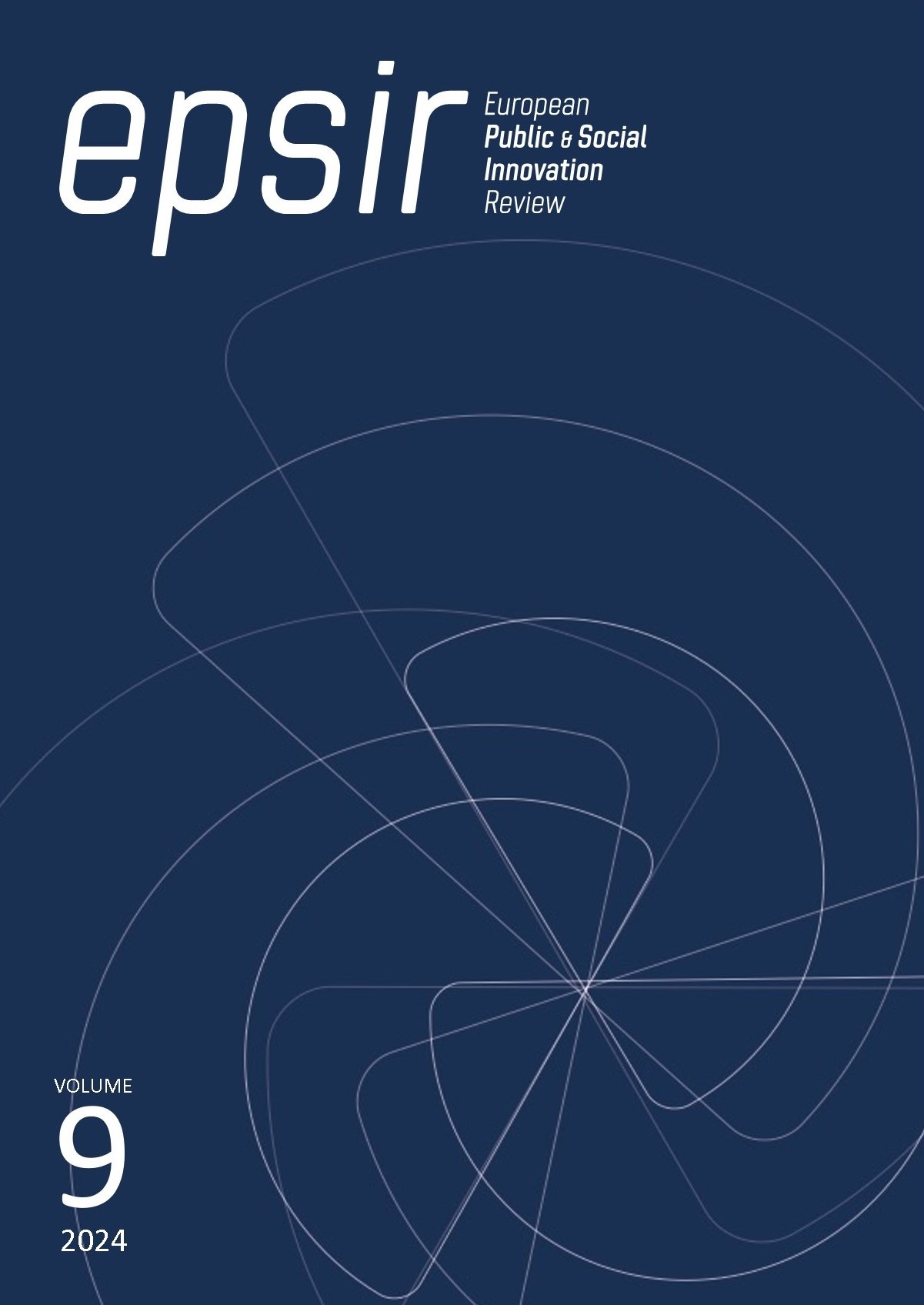Sustainable meaningful learning through the tree of knowledge: a teaching project for Nepal
DOI:
https://doi.org/10.31637/epsir-2024-574Palabras clave:
meaningful sustainable learning, knowledge models, natural protected areas, concept maps, primary schools in Nepal, learning for social justice, climate change, education for sustainable developmentResumen
Introduction: The climate crisis and social justice are at the focus of UNESCO's 2030 Agenda, which presents 17 SDGs (Sustainable Development Goals) as a roadmap for the preservation of the planet. From the educational field, its achievement can be promoted through the design of educational projects that promote sustainable meaningful learning (SML) hand in hand with learning for social justice (LSJ). In this context, an innovative teaching practice was developed in 2021-22 using biosphere reserves in Nepal, in which students from the International Primary Education Teacher Degree Program designed teaching materials to be offered to nearby primary schools in Nepal, close to the selected biosphere reserve. Methodology: The students built knowledge models based on conceptual maps about the selected biosphere reserve, creating teaching units with activities aimed at students in Nepal. A tree of knowledge was also designed that summarized the joint project as a metacognitive tool for sustainable meaningful learning. Results: For the evaluation, a double rubric was used that analysed both the oral defence of the project and the different sections of the UD, and personal reflections were analysed, as well as the learning results and motivation. Discussion: Sustainable meaningful learning together with learning for social justice and the didactic tools that were used are very valid methodologies to stimulate international cooperation and promote meaningful, autonomous, motivating and sustainable learning.
Descargas
Citas
Ausubel, D. P. (2000). The acquisition and retention of knowledge: a cognitive view. Kluwer Academic Publishers. DOI: https://doi.org/10.1007/978-94-015-9454-7
Cañas, A. J., Hill, G., Carff, R., Suri, N., Lott, J., Gómez, G., Eskridge, T. C., Arroyo, M., & Carvajal, R. (2004). Cmaptools: a Knowledge modeling and sharing environment. Concept Maps: Theory, Methodology, Technology. Proc. of the First Int. Conference on Concept Mapping A. J. Cañas, J. D. Novak, F. M. González. Pamplona, Spain.
European Commission. (n.d.). Consequences of climate change. Retrieved from: https://acortar.link/jVub4j
González, F. (2008). El mapa conceptual y el diagrama UVE. Recursos para la Enseñanza Superior en el siglo XXI. Narcea.
Gowin, D. B. (1981). Educating. Cornell University Press.
Jose, S., Patrick, P. G., & Moseley, C. (2017). Experiential learning theory: the importance of outdoor classrooms in environmental education. International Journal of Science Education, Part B, 7(3), 269–284. https://doi.org/10.1080/21548455.2016.1272144 DOI: https://doi.org/10.1080/21548455.2016.1272144
Kaiser, D. (2020). Quantum legacies: dispatches from an uncertain world. University of Chicago Press. DOI: https://doi.org/10.7208/chicago/9780226698199.001.0001
Khun, T. (1962). The structure of scientific revolutions. University of Chicago Press.
Larraz, N., Vázquez, S., & Liesa, M. (2017). Transversal skills development through cooperative learning. Training teachers for the future. On the Horizon, 2(5), 85–95. https://doi.org/10.1108/OTH-02-2016-0004 DOI: https://doi.org/10.1108/OTH-02-2016-0004
Ministerio de Asuntos Exteriores, Unión Europea y Cooperación. (s. f.). Reservas de la biosfera. https://bit.ly/3zjd261
Monné, A., & Porté, C. (2022). La mejora de la biosfera: un reto en la formación de profesorado. Interantional Visual Culture Review/ Revista Internacional de Cultura Visual, 2-8. https://doi.org/10.37467/revvisual.v9.3783 DOI: https://doi.org/10.37467/revvisual.v9.3783
Novak, J. D. (1998). Conocimiento y aprendizaje. Los mapas conceptuales como herramientas facilitadoras para escuelas y empresas. Alianza Editorial.
Novak, J. D., & Gowin, D. B. (1984). Learning how to learn. Cambridge University Press. DOI: https://doi.org/10.1017/CBO9781139173469
Oxfam Intermón. (s. f.). Cambio climático. ¿Cómo combatirlo en tu día a día? https://bit.ly/3Wax9fX
Pérez de Villarreal, M. (2022). Nuevas estrategias para la enseñanza de las ciencias naturales en educación superior. Aprendizaje significativo sostenible. Octaedro.
Pérez de Villarreal, M., & Scotton, P. (2022). Knowledge models on biosphere reserves for visual and sustainable meaningful learning in Pre-service teachers: Quo Cadis Visual Pedagogies?. Video Journal of Education and Pedagogy, 7(1), 1-16. https://doi.org/10.1163/23644583-bja10033 DOI: https://doi.org/10.1163/23644583-bja10033
Rolheiser, C., & Ross, J. A. (2001). Student Self-Evaluation: What Research Says and What Practice Shows. In R. D. Small, & A. Thomas (Eds.), Plain Talk about Kids (pp. 43-57). Covington, LA: Center for Development and Learning.
UNESCO. (n.d.). Man and the Biosphere Programme (MAB). https://www.unesco.org/en/mab
UNESCO (2021a). Addressing climate change. https://bit.ly/4eFCUcq
UNESCO (2021b). Education for climate action. https://bit.ly/3VzOoFC
United Nations (2015). Transforming our world: the 2030 Agenda for Sustainable Development. Retrieved from: https://sdgs.un.org/2030agenda.
Video UNESCO. Associated Schools 4 Climate-Documentary. Youtube. https://bit.ly/4ciRBRk
Descargas
Publicado
Cómo citar
Número
Sección
Licencia
Derechos de autor 2024 Maider Pérez de Villarreal Zufiaurre

Esta obra está bajo una licencia internacional Creative Commons Atribución-NoComercial-SinDerivadas 4.0.
Authors who publish with this journal agree to the following terms:- Authors retain copyright and grant the journal right of first publication with the work simultaneously licensed under Creative Commons Non Commercial, No Derivatives Attribution 4.0. International (CC BY-NC-ND 4.0.), that allows others to share the work with an acknowledgement of the work's authorship and initial publication in this journal.
- Authors are able to enter into separate, additional contractual arrangements for the non-exclusive distribution of the journal's published version of the work (e.g., post it to an institutional repository or publish it in a book), with an acknowledgement of its initial publication in this journal.
- Authors are permitted and encouraged to post their work online (e.g., in institutional repositories or on their website) prior to and during the submission process, as it can lead to productive exchanges, as well as earlier and greater citation of published work (See The Effect of Open Access).



